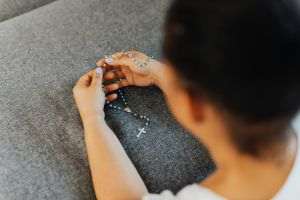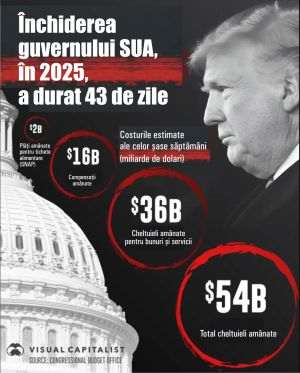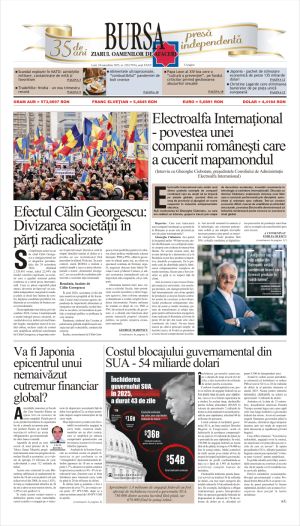The General Assembly of the Romanian Academy has decided, through a secret vote, to elect academician Dumitru T. Murariu as Vice President and a total of seven honorary members, including Ion Hadârcă (from the Republic of Moldova) and Moshe Idel (from Israel). According to the Romanian Academy's Communication Bureau, Dumitru T. Murariu is succeeding the late Răzvan Theodorescu, who passed away on February 6th this year.
The seven honorary members elected are as follows: Vasile Brînzănescu - Mathematics Section; Ion Hadârcă (Republic of Moldova) - Philology and Literature Section; Lorenzo Renzi (Italy) - Philology and Literature Section; Florin Curta (USA) - Historical Sciences and Archaeology Section; Liviu Ciprian Maţenco (Kingdom of the Netherlands) - Geonomic Sciences Section; Moshe Idel (Israel) - Philosophy, Theology, Psychology, and Pedagogy Section; Dorin Comaniciu (USA) - Information Science and Technology Section.
Dumitru T. Murariu, who is currently serving as the President of the National Commission for Antarctic Research and Extreme Environments and as the Vice President of the Romanian Committee for the History and Philosophy of Science and Technology (CRIFST), was born on September 21, 1940, in Ungureni, Botoşani County. He completed his primary and secondary education in Ungureni and went on to study at the Faculty of Biology-Geography at "Al. Ioan Cuza" University in Iaşi, specializing in biology-zoology, graduating in 1966.
Between 1966 and 1969, he worked as a hematologist-bacteriologist at the "Sf. Pantelimon" Hospital in Bucharest and published his first scientific work in 1968, in collaboration with others, in the "Ftiziologia" journal of the Medical Sciences Society in Bucharest. Starting in 1969, he was appointed as a museum guide, curator, and chief curator at the National Museum of Natural History "Grigore Antipa."
In 1975, he defended his doctoral thesis on the anatomy, histology, and histochemistry of specialized cutaneous glands in insectivorous mammals in Romania, under the scientific supervision of Prof. Emeritus Gheorghe T. Dornescu, at the Department of Comparative Anatomy at the University of Bucharest. In his laboratory research, he made original contributions by describing the structure, histology, and histochemistry of the ten types of specialized cutaneous glands on the bodies of insectivorous mammals. He analyzed the direct contact of the skin of these mammals with the surrounding environment and its influence on their bodies, providing original insights into both the structure and the role of these glands in the physiology, ecology, ethology, taxonomy, and phylogeny of living beings. He contributed with new interpretations to explain intra- and interspecific relationships, correlating the development stage of these glands with the breeding periods and demonstrating the role of certain secretions in communication between individuals and defense against predators.
He was a Fulbright scholar for 12 months (September 1975 - September 1976), collaborating with experts from Kansas State University and publishing the work "Histology and histochemistry of specialized cutaneous glands in eight species of North American shrews." During the same period, he had short working visits to the National Museum of Natural History in Washington, D.C. (Smithsonian Institution), the American Museum of Natural History in New York, the Carnegie Museum of Natural History in Pittsburgh, Pennsylvania, the Field Museum of Natural History in Chicago, Illinois, and the Museum of Natural History in Lawrence, at the University of Kansas.In addition to his research in histology and histochemistry of cutaneous structures, he clarified the taxonomy of several species in the fauna of Romania and pointed out the existence of unknown species and subspecies (e.g., Erinaceus concolor, Microtus agrestis baillonii, Sicista betulina, Canis aureus - with stable populations in the country since 1984). He participated in 37 international congresses and conferences, presenting scientific papers.
Starting in 2000, he has been a doctoral advisor at the Doctoral School of the Faculty of Biology at the University of Bucharest, supervising 23 confirmed doctoral titles in biology.
In 1976, he became the head of the Vertebrate and Restoration-Taxidermy Section of the National Museum of Natural History "Grigore Antipa." From 1998 to 2014, he was appointed as the General Director of the museum following periodic evaluations. From 2015 to 2016, he served as the Deputy Director of the "Emil Racoviţă" Institute of Speleology, and starting from July 1, 2016, he has been the Director of the Institute of Biology of the Romanian Academy.
Between 2009 and 2011, he was the coordinator of the project "The National Museum of Natural History Grigore Antipa reinvented at 100 years," reorganizing and modernizing the museum's main exhibition. Dumitru T. Murariu became a corresponding member of the Romanian Academy in 2006 and was elected a full member in 2021.













































